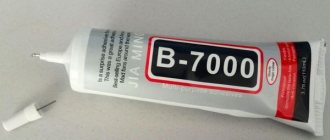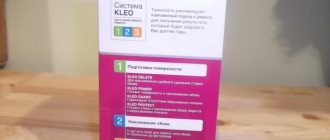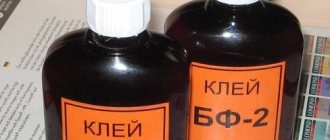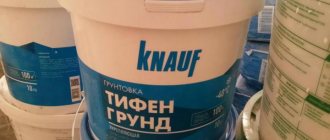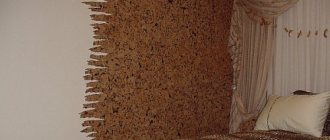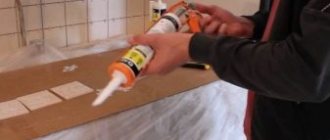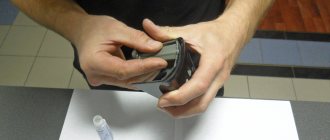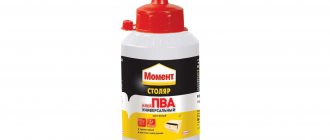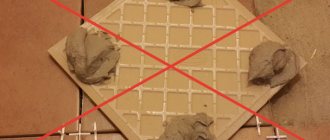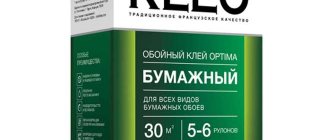Cork wallpaper for walls: straight to the disadvantages
Usually this point is saved for later, but it is still wise to highlight possible shortcomings right away in order to weed out those potential buyers who are categorical in some characteristics.
There is only one main drawback. This is a high price. Indeed, the price segment cannot be called inexpensive; you will have to spend money on wallpaper.
The second point is that there is little choice. As mentioned above, color and structural solutions are not very widely represented. But if you just want a cork, it’s unlikely that this will upset you much, because you are imagining some standard option, and there are definitely enough of them.
Well, regarding the price, I would like to say that a material with such characteristics cannot be cheap, you still buy environmentally friendly wallpaper that will last a very long time. And you can spend money on this.
Advantages of cork wallpaper in the interior, photo
You can buy self-adhesive wallpaper, which, of course, will simplify repairs. Focus on brands with a good reputation. But not only the Leroy Merlin brand and the Ibercork company deserve attention; there are many little-known companies that produce wallpaper of excellent quality.
Advantages of cork wallpaper:
- Low thermal conductivity, which means that the wallpaper maintains a stable temperature in the room, and, despite the fact that its thickness is small, it is a good insulator that does not allow cold walls to affect the microclimate of the room.
- High noise insulation. Yes, the wallpaper muffles some sounds, although not to the maximum extent.
- Resistant to moisture. Cork has water-repellent properties. You will be convinced of this as soon as you remember where you most often find this material - in the corking of wine bottles. Therefore, cork wallpaper is used not only, for example, in the living room, but also in the bathroom.
- Cork does not absorb odors - and this is its great advantage; wallpaper can also be glued in the kitchen.
- Cork wallpaper is antistatic. They can, in a sense, even repel dust from themselves. That is, the wallpaper does not actually become dirty. Moreover, even fat does not settle on them. Again, a good reason to buy this kind of wallpaper for the kitchen.
- And, of course, the appearance, to be sure. Natural and original, warm and homely, at the same time fresh and modern.
Useful tips
A few more tips and notes that will help you install cork with glue efficiently and reliably:
- It is necessary to cover the cork sheet and the wall with latex-acrylic compounds.
- Acrylic adhesive is universal and can only be applied to the wall.
- When choosing the means that will be used to fasten the cork, take into account the weight of the canvas and the features of the wall surface.
- When purchasing glue, be sure to pay attention to the quality of the base and composition. Water-based materials are safe. Products that contain solvent can be toxic and flammable.
- Water-based adhesive materials are susceptible to high humidity in the room, as a result of which the cork coating may move away from the wall.
- Wear a respirator if you use solvent-based adhesive.
- Remove or turn off all sources of fire and heating devices that are located near the surface on which the plug will be mounted.
- Solvent adhesives have a short curing time of 10-30 minutes and set quickly. Immediately after applying the composition, press the cork firmly against the wall. Complete drying time does not exceed 12 hours.
- There are compositions of the so-called smooth polymerization, they allow you to adjust the position of the cork sheet during the installation process.
- It is extremely difficult to remove glue that gets onto the front side, so when working, you must be extremely careful, for example, use masking tape.
- Use a small spatula to scoop up a very thick mixture and apply it to the wall surface with a comb.
- A rubber roller presses tiles and wallpaper to the wall with maximum quality.
- If there are traces of hands left on the front surface, on the wax coating, you can remove them using a hair dryer. The wax will become softer under the influence of hot air, and the marks will disappear. If there is no wax coating, the contaminated area will have to be replaced.
- It is most convenient to glue rolled materials, since they are thinner, have natural colors and are coated with a special varnish.
Cork is an expensive material, but it combines safety, durability, excellent sound and heat insulation properties, and environmental friendliness. Cork panels on the wall look aesthetically pleasing and do not require replacement for a very long time.
The disadvantage of cork covering walls is that if you want to replace such wallpaper, it will not be easy to remove its remains from the surface. In addition, when chips and cracks appear, it is difficult to remove such defects.
However, if you follow the rules of installation and operation, the room will retain its luxurious appearance for a long time.
What glue is suitable for cork wallpaper?
It is logical that you will have to choose a special glue. You can buy acrylic-based glue, it is not cheap, but it is easy to use.
If you intend to save on glue, buy contact glue. But it will be more difficult to work with it, and you will definitely spend more time.
In any case, the label of the adhesive you purchase should indicate “for heavy wallpaper.” It’s easier to ask the seller, who will tell you whether the glue can withstand such a load.
Types of adhesives for cork
When choosing adhesive for cork wallpaper, it is necessary to take into account not only the type of coating, but also the characteristics of the adhesive composition itself. Each type of glue has its own setting time, reliability of adhesion and degree of toxicity.
Cork glue can be:
- universal. Basically, these are acrylic-based adhesives. Only one surface needs to be treated with this glue;
- contact This glue can be either latex-acrylic or polypropylene. It must be applied to both surfaces to be glued.
Types of adhesives for cork (click to enlarge)
The range of adhesives for cork is quite large, so before purchasing, be sure to read the instructions.
Important! The popular water-based PVA glue in everyday life is not suitable for gluing wallpaper made of cork - it will not withstand their weight. Even tiles can become deformed due to excess moisture present in its composition.
Technical cork on walls under wallpaper for sound insulation
If you want to achieve good sound insulation with cork alone, you are unlikely to succeed. And this is understandable: sound waves lose strength after passing through several barriers. Moreover, the barriers must be different in both density and structure. Therefore, taking a cork in combination with something is quite reasonable, but don’t rely on it alone.
The most important nuance of cork sound insulation is that the cork will effectively reflect sound from your side, but the sound insulation of noise penetrating from the outside will be insignificant. That is, the meaning of its use is where the noise source itself is located. Cork works well in combination with mineral wool, plasterboard, and soundproofing boards.
Rules of use and tips
When using bearing adhesive, you must adhere to some rules:
- Despite the fact that some structures are used on uncleaned surfaces, if possible, it is still necessary to clean and degrease. This will have a positive effect on the gluing result.
- A stronger connection will occur on rough surfaces.
- Do not allow material to get on the bearing balls, as this will lead to damage to the part.
- The glue must be distributed evenly over the entire plane of the element being connected. Some compounds can be applied to one of the planes being connected.
- for applying its compositions it provides for manual use, semi-automatic and automatic methods.
- For better distribution of the mixture on the planes, it is necessary to rotate them relative to each other with the composition applied to them.
- If re-gluing occurs, then previous applications must be removed from the surface.
We recommend watching the video review:
What is cork wallpaper
Well, this is an imitation wallpaper. As a rule, an inexpensive paper version that imitates cork. Although sometimes wallpaper may not be so cheap.
Is there any point in buying such wallpaper? Of course, you can expect some effect of a natural coating from them, but if this is a room, as they say, no complaints, or you are confident in the other ideality of the interior. Of course, it will be noticeable that this is not natural cork. But in the same hallway, beautiful, high-quality cork wallpaper will look nice. At the same time, see how you like this option in general, and whether it’s worth taking a closer look at natural cork wallpaper.
Cork wallpaper for walls: reviews on gluing
Cork wallpaper is available in rolls or sheets. Your task is to cut them to the size of the room and stick them on the wall.
The wallpaper is applied like this:
- The surface for wallpaper is being prepared;
- The surface is primed;
- Glue is applied;
- The strips are glued.
Cork wallpaper is glued only joint to joint. It is convenient to do this work together, because the length of the strip can reach three meters. In places where the joint did not stick, or where it did not stick well, you need to coat it with glue and press it.
It is easier to level this wallpaper with a special rubber roller.
Types and characteristics of cork materials
Nowadays, construction stores sell different types of cork coverings for walls and floors. As for wall materials, they come in two types: wallpaper and panels. Wallpaper can have a paper base or be a roll of cork.
The former play a decorative role; the top is covered with a varnish or wax composition. Due to their light weight, they can be glued not only to walls, but also to ceilings. The effect of heat and sound insulation due to their small thickness should not be expected from them. Some wallpapers need to be placed on an adhesive compound, while others simply need to tear off the inner backing and secure them like a self-adhesive film.
Rolled cork is also used as wallpaper, but costs an order of magnitude more. It is thick, durable, and is sold in rolls that cannot be bent. This material is 100% natural, sometimes it is even sold in unprocessed form, and after gluing it requires additional decorative finishing. Most often, this canvas is used for pasting kitchens and hallways.
Other finishing materials made from cork:
- Panels. The top is coated with varnish and wax, ideal for wet rooms.
- Plates. They have a different shape than panels (usually wider and shorter) and serve as a material insulating from noise and cold.
- Tile. It can be single-layer or double-layer. The first option is simple tiles made from a single layer of material. The second type of tile has a brightly colored bottom layer and a veneered top layer. Colored fragments in a two-layer tile are slightly translucent.
For the floor, a cork backing is used, which is usually laid under parquet or laminate. It reduces heat loss, reduces noise levels, and neutralizes base defects. Such substrates can also be glued to walls under any finishing material in order to insulate the room, sound insulation, and improve the adhesion of wallpaper to the surface.
Design of rooms with cork wall covering (video)
Cork wallpaper is a beautiful, natural wallpaper that will be especially good in an eco-friendly interior. And the main thing is that you won’t have to update the wallpaper any time soon, since the cork is wear-resistant and moisture-resistant.
Wall decoration with cork is gaining popularity. Many have already realized that this environmentally friendly, durable coating has many advantages. The ability to use cork in rooms with high humidity expands the possibilities for designers who willingly use this material to create stylish interiors.
Finishing walls with cork is within the power of a home craftsman. To successfully complete this type of work, carefully study the instructions for applying cork, select the appropriate type of material, and buy special glue. You need the usual tools: a knife, a tape measure, a rubber and velor roller, a pencil, a thin brush, a plumb line, a spatula with teeth.
A few more tips for working with cork
Cork wallpaper is applied very simply - either horizontally or vertically. If you choose cork tiles, remember that they should be laid like tiles. What does it mean? Laying tiles can be done evenly, staggered, diagonally or in diamond patterns. This issue should be resolved before you start work.
Cutting is the main problem encountered when gluing cork wallpaper and tiles. The main tool for solving the problem is a construction knife with replaceable blades. Cork is quite brittle, so the knife you use must be very sharp. This will help you minimize tearing of this delicate material. Various cutouts, for example, for sockets, must be made according to one template; the socket box can act in its role.
In the corners, cork wallpaper, unlike paper-based wallpaper, does not bend. They are cut and joined right in the corner.
Cork wallpaper covered on the front side with wax is very beautiful, but even the smallest traces of dirty palms are visible on them. What to do if such a nuisance has already happened? Heat the contaminated area using a hair dryer. Under the influence of temperature, the wax coating will soften and the marks will heal. However, a stained cork cannot be restored without wax; they only need to be replaced.
Now you know how to glue cork wallpaper. Don’t let the laboriousness of the work scare you, because an interior made in this style looks simply great, so it’s worth the effort.
Do you have experience working with cork flooring? Have you encountered difficulties that are not described in the article? Share with us how you solved them? We'd love to hear about your progress.
DIY wall decoration with cork
Start by choosing your coverage . Most often, cork wallpaper and cork tiles are glued to the walls. These coatings look very beautiful, but working with each of them has its own characteristics.
Cork wallpaper , which has a paper base, must be glued together by two people, since after applying special glue, the panels get wet and can tear during the work if there is no assistant nearby. It would be correct to do this: one applies the glue, the second helps to level the panels. The process is the same as when gluing regular wallpaper.
Baseless cork wallpaper is denser, but at the same time, fragile. The roll coating is quite difficult to glue. It is better to entrust this work to professionals.
For those who decide to decorate the walls with cork themselves, the third option is more suitable - cork tiles . This material is a compressed cork that is sanded and has a special moisture-resistant coating. Thickness is 3-4mm, sometimes cork sheets with greater thickness are used. There are one- and two-layer tiles.
KMC Super Extra
Remove old wallpaper, any dirt and, if any, whitewash from the surface of the walls. In order for heavy canvases to stick perfectly to the wall, it needs to be primed. Take 12 liters of water and add a packet of powder there. Mix everything thoroughly and apply it to the walls with a roller or brush. Let it dry for 4 hours and you can start applying wallpaper to the walls.
You will see a table on the glue package. There it is written for which type, in what proportion with liquid, it is optimal to dilute the powder. Take a plastic or other bucket and fill it with clean water. While stirring, make a funnel and slowly pour the required amount of powder into it. Knead the mixture quickly for 3 to 5 minutes. Let it sit for 10 to 15 minutes. and stir again.
Package of CMC adhesive composition marked Super Extra
Measure the required strip length from the roll, plus 5 cm, and cut it. Now apply glue with a brush or roller. Carefully roll the roll so that the glue is in the middle. Let the fabric soak for 10 to 15 minutes. Moving down from the ceiling, stick. If there are bubbles, you will have to pierce them and squeeze out the air.
Lubricate the edges generously, as cork wallpaper is heavy and will be placed end to end. With the windows and doors closed, the canvases take a day to dry.
CMC Super Extra is best stored unopened at no less than +10 °C and no more than +25 °C. In a room with humidity above 90%. 1 g powder is accurately stored. Without losing its adhesive properties.
Related article: How to make a greenhouse with your own hands (16 photos)
Adhesive for cork wall covering
For reliable adhesion to the surface, which is decorated with slabs of natural materials, special glue for cork is used. Working with it has its own specifics :
- The glue is thoroughly mixed;
- If the adhesive is contact, you need to apply it to both the wall and the tiles. Non-contact acrylic adhesive is applied to one surface, but it is advisable to choose the first option. It’s more reliable this way;
- You need to wait 20 minutes;
- Then forcefully press the cork tile against the wall;
- Check for the formation of air bubbles. It is necessary to “disperse” them with a rubber roller if they appear;
- The glue sets quickly. If the tile is stuck unevenly, move it immediately while it moves;
- The glue often has an unpleasant odor. Choose a non-toxic base. Be sure to ventilate the room;
- The glue dries and sets completely within 48 hours.
Manufacturers offer several types of adhesive compositions for cork. Which to choose? Pay attention to the characteristics indicated in the annotation. Some types of glue contain toxic substances (solvents). Others are safer and do not emit harmful fumes after drying.
The following brands of glue have good reviews:
- Moment Traffic jam . No solvents. Withstands from -40C to +100C. Non-toxic;
- WAKOL . The base is latex-acrylic. No solvents. Suitable for walls and floors;
- COLA-CORK FS . Best adhesion to fiberboard, ceramic base, cement and metal base;
- IBODA D7 CONTACT . Dispersion glue. Solvent – absent. The thickness of the tiles is no more than 4 mm and without a backing. The temperature in the room should not drop below +15C during operation;
- Bunitex . Produced on the basis of synthetic rubber and polychlorprene. Toxic. Contains toluene and rosin;
- Thomsit K 172 . Toxic. Contains solvent. No work is carried out below +15C.
And here is an article about wooden wall panels.
This section of our website https://ru-house.net/postrojki/banya/pechi/ is all about stoves for your bathhouse or sauna.
How to glue?
To ensure the work progresses successfully, prepare all the tools and materials, check the number of cork slabs and the temperature in the room. Ensure good ventilation if adhesive is solvent based.
How to cover walls with cork. Work order :
- The wall is cleaned and dusted. Only large cracks and holes are sealed. Minor defects do not need to be eliminated;
- Draw perpendicular lines. This creates an angle where the first of the plates will lie. Control with a plumb line to ensure there is no distortion;
- Using a spatula with a serrated edge, apply glue to the wall and tiles (unless otherwise provided in the instructions for using the glue);
- There is no need to cover more than 2 squares;
- After 20 minutes, begin laying the cork slabs;
- You need to press firmly, but gently. Do everything without haste. You can’t hesitate either - the glue sets quickly;
- Using a rubber roller, carefully press each slab against the wall;
- If joints are visible in places, apply glue between them with a thin brush.
How to glue cork wallpaper
You should remember right away - cork material is capricious, it cannot be glued “overlapping” or folded at a break. Therefore, in order to avoid unpleasant moments when gluing the type of finishing material in question, you need to follow the recommendations of specialists. These include :
- You need to start gluing from the window - this way you can visually hide the joints of the panels.
- On each wall you need to make perfect markings for the first strip of cork wallpaper - this will guarantee the correct pasting of all surfaces.
- After dilution, according to the instructions, the glue must be applied with a comb-type spatula both to the surface of the wall and directly to the cork wallpaper itself.
- If the adhesive gets on the front side of the finishing material, it is either immediately removed with a damp sponge/rag, or wait until it hardens completely and remove it with a knife.
- In order to paste over a corner, you will need to cut the canvas with a utility knife or scissors - you cannot overlap cork wallpaper even in these difficult places.
The best option would be to first study the instructions from the manufacturer of cork wallpaper - such a document is included in each roll. To avoid mistakes, you can use a few more tips :
the glue should be distributed evenly over the surface of the wallpaper; you will need to calculate the required amount at once - this will prevent the appearance of adhesive at the joints;- Cork wallpaper looks great as a decoration for window openings or door arches, but you will have to be extremely careful - such material does not stick to an overlap, so you will need to constantly trim something;
- after the cork wallpaper has completely dried on the wall, it is advisable to apply special wax or varnish to it - this will give the surface more shine and protect it from damage;
- dry cork wallpaper on the walls or ceiling for at least 3 days - during this time there should be no drafts in the room;
- if you choose a varnish for the topcoat on cork wallpaper, then give preference to “breathable” types;
- be sure to buy cork wallpaper with a reserve - if there is a need to replace some area, then in the future you will not be able to purchase material with a similar color.
If you follow the recommendations outlined in this article, the result of the work will be an original, safe and attractive interior of the room.
( 75 votes, average: 5.00 out of 5)
Cassette ceiling
Sports corner for an apartment: selection of equipment, location, fastening, manufacturing
Related Posts
Price issue
Cork is a fairly expensive material . But the health safety, unique properties and durability of the material make the costs commensurate with the benefits of using cork wall coverings.
Cork wallpaper on a paper basis . Price - from 225 rub. per m2;
Baseless roll stopper . Price - from 225 rub. per m2;
Cork slabs . Price - from 432 rubles. per m2;
Glue for cork - average price - 116 rubles. for 1.5 kg. Glue consumption – from 350g/m2.
Cork wallpaper is a finishing material that is rapidly gaining popularity among buyers. The main characteristics of cork wallpaper are naturalness, environmental friendliness, and original appearance. Cork wallpaper gives the room incredible coziness and warmth, is suitable for any design style, looks expensive and bright. But the material itself is not budget-friendly, however, the coating will serve you for a long time. You can also save on pasting by installing cork wallpaper yourself. Read this article for step-by-step instructions.
Let's figure out what kind of wallpaper this is
In the manufacture of materials for interior decoration, natural raw materials are increasingly used, even though they are expensive, they are in great demand. In this row we find our wallpapers made from cork oak bark, a unique material in its properties. Agree, ten years ago it would hardly have been possible to think that the cork we are accustomed to could bend in such a thin layer without breaking, and even take up space on a steep wall without falling.
The production of wallpaper is based on the natural resinousness of cork; when it is pressed into a thin layer, it heats up and releases a little resin, which glues it into a durable layer. This version of wallpaper is called baseless, that is, the roll is represented exclusively by a sheet of cork without foreign materials. You can also find this option in the form of slabs. But a purely cork composition is a very rare type of finishing, firstly, because its production is difficult, and secondly, its high cost and relative fragility make such repairs troublesome and costly.
Wallpaper in the form of a layer of cork on a paper base is much more convenient and practical. To do this, they use cork oak veneer, which is glued in an even layer onto the roll, sometimes even making not a continuous layer, but some kind of pattern. It cannot be said that these materials are monotonous; cork has many of its natural shades, and manufacturers also resort to forced coloring of raw materials before making wallpaper.
Preparation for installation
Before starting work, it is necessary to prepare the materials and tools that will be needed in the process.
- Selected cork wallpaper, in roll or tiled version;
- Construction level for even gluing of the first sheet or row;
- Cork wallpaper adhesive;
- Spatulas for applying glue, a fine-tooth comb will do;
- Stationery knife with replaceable blades;
- Long ruler;
- Dry cloth to remove excess glue.
When choosing adhesive for cork wallpaper, experts advise choosing a product with an acrylic base. Contact glue will also work, but it takes longer to dry and there is a risk that the weight of the canvas will have time to slide from its intended place before it dries completely. Avoid products containing water. Choose cork tiles or rolls based on your preferences and planned design. An important rule for working with cork wallpaper: bring the material into the room you plan to wallpaper in advance. The cork must get used to the temperature and humidity in the room so that after gluing it does not dry out or shrink. For the convenience of working with dense sheets of rolled cork wallpaper, the cut strips must also be left for a while so that the wallpaper straightens.
Pufas K12
The package contains 700 grams, the indicated manufacturer is Germany. K12 is a contact adhesive. It is capable of gluing cork slabs, like other heavy canvases, to any flat surface. It doesn't matter whether the surface is absorbent or not. Only on PVC cork coating this composition will not stick.
Logo of the German brand Pufas
Usage
Place a stack of cork slabs in the room where you plan to renovate. Take a brush or roller with small bristles. Apply the mixture evenly to the slabs and let it dry. This requires 1 to 1.5 hours. The composition will become transparent. Now glue the cork boards.
If there is a lot of work, you can apply the composition to the slabs a day before the main work. When the glue dries, stack the slabs one on top of the other. The main thing is that no dust gets on the glue layer.
Apply the composition to the base (walls or floors) before gluing the slabs. If the base absorbs well, then let it take up to 1.5 hours for the glue to dry. Does the base absorb little glue? This means that 1 hour is enough until the composition becomes transparent.
Related article: How to get rid of bed bugs at home using folk remedies
Now bring the slab to the base. Press her. Tap the entire area with a special rubber hammer. Carefully around the edges. Place each canvas exactly in its place. Once you tap, the material can no longer be moved.
K12 - universal German contact composition
Have you laid the slabs on the floor? You can walk right away. If you glued cork sheets to the walls, then to paint the surface, wait a day and start.
If the room is cooler than + 15 ° C, heat the room first, and then start work. You cannot glue slabs at humidity levels exceeding 75%. Rinse the tools you used immediately under running water.
The mixture is stored dry for up to 48 months from the date of manufacture in a cool place, but not at sub-zero temperatures.
Step-by-step instruction
Let's take a closer look at the stages of installing cork wallpaper.
- Preparing the base. Cork wallpaper requires careful preparation. Clean the walls from previous coating and dirt, inspect the surface. To avoid wallpaper peeling off, check the evenness of the walls. The maximum height difference should not exceed 3 mm, otherwise you will have to start leveling first. Prime smooth walls and wait until completely dry.
- Using a plumb line or building level, mark the wall. It is enough to mark the location of the first sheet or row, then the wallpaper is glued together.
- Cutting wallpaper is an important step. Cork wallpaper is denser and harder than classic wallpaper; working with it will require skill. Mark the place of the cut, apply a ruler and cut the desired section with a precise movement. To work, you will need a sharp stationery knife; prepare replacement blades. If the knife is not sharp, nicks will remain on the cork, which will lead to cracks and delamination.
- Dilute the glue according to the instructions, treat a small area of the wall. Apply glue to the inside of the wallpaper and let it soak for 10 minutes. Paste the canvas according to the intended markings. Difference from classic wallpaper: start gluing from the bottom, moving carefully to the top.
- If the choice fell on tiled cork wallpaper, work with them is carried out as with ceramic tiles. Glue the tiles sequentially, in a checkerboard pattern, according to the design project.
- After completing the work, let the wallpaper set a little, treat the walls with a varnish or wax coating.
Getting ready to hang cork on the walls
We recommend reading: Calculating the amount of wallpaper
After the main purchases, you can begin preparatory work. First of all, it is worth considering that cork wallpaper is sold in rolls, and it must lie in the room where the renovation is to take place for at least 2 days - this will be enough for the material to reach the required temperature and humidity. If you start gluing cork wallpaper immediately after purchase, you will not be able to avoid deformation of the joints and edges, as well as swelling of the wallpaper.
The next step is to cut the wallpaper. In order to make this work simple, experts recommend first making markings on the surface where the cork wallpaper will be glued. This is done using a plumb line or a building level, using a marker or pen/pencil to mark the lines of the expected location of the canvases.
The last stage of preparation is cutting the cork wallpaper into the required sheets. Do not forget to make holes in advance in the material in question for sockets and switches - just to facilitate this work, preliminary markings are made on the surface. And so that these holes are ideally shaped, you can use prepared socket boxes as patterns. It is convenient to carry out all work on cutting the material in question with a stationery knife or sharp scissors.
Please note: it is recommended to involve assistants for the preparatory work - much less time will be spent.
Features of working with cork wallpaper
Cork wall covering is an unusual finishing material, demanding and expensive. Mistakes made during work will not be easy to correct after completion. Take into account the nuances of working with cork wallpaper so that the coating lays evenly and correctly.
- It is almost impossible to remove glue from the front side of the wallpaper without leaving a trace, so do the work slowly and carefully, wiping off the excess with a dry cloth. Use a plastic or rubber spatula to apply the required amount of glue.
- There are two techniques for wallpapering with cork: classic vertical and horizontal. When gluing cork wallpaper horizontally, also follow the markings, first gluing one edge and then slowly moving towards the opposite wall.
- Wallpaper made from cork is dense, so working on the corners differs from pasting with regular wallpaper. Glue the sheets at the joint, do not bend them at the corners, so as not to damage the cork.
The use of cork wallpaper will add unique comfort to the room. And installation work will not be difficult even for a beginner if you follow simple rules.
Become our author
Every person is special, and everyone's experience is unique. Tell us about yours. Earn recognition and gratitude from our readers.
What is cork wallpaper
The type of finishing materials under consideration has its advantages and disadvantages, but in any case, familiarize yourself with the main characteristics of cork wallpaper:
Elasticity. The material can be bent in different projections - this is very convenient when working with it, especially since literally after a few minutes cork wallpaper takes on its original form.- Waterproof. Cork wallpaper has an “airy” structure, which does not allow water to penetrate into the material.
- Long service life. It is thanks to its cork structure that this type of wallpaper is resistant to mechanical damage.
- Soundproofing and noise insulation.
- Fire resistance. Cork wallpaper, of course, can burn, but the moment of ignition does not begin for a long time, even when exposed to high temperatures.
A very important point is that the type of finishing material in question is hypoallergenic, so it can be safely used in the renovation of premises for children. By the way, cork wallpaper can be used to cover absolutely any surface, including the ceiling.
